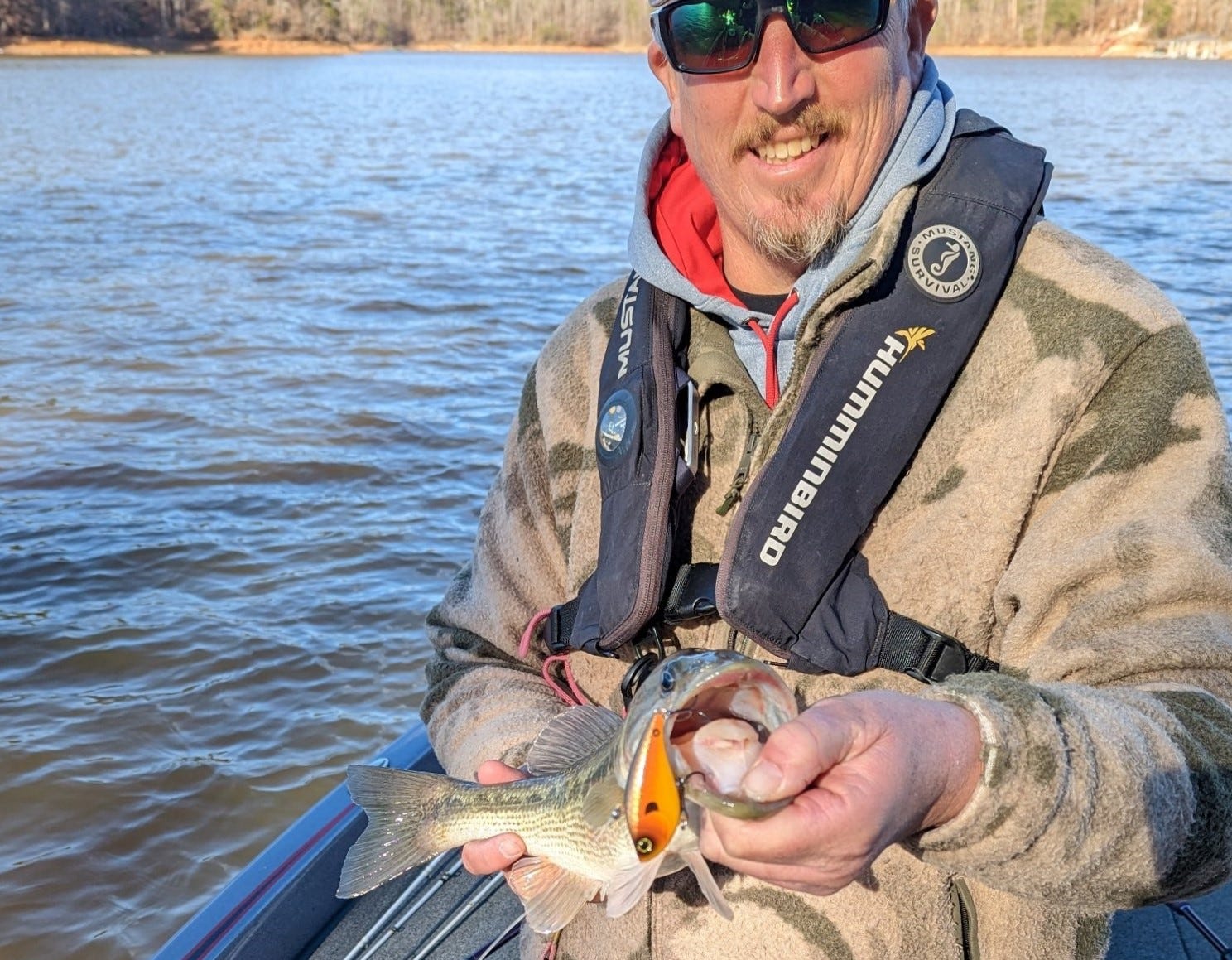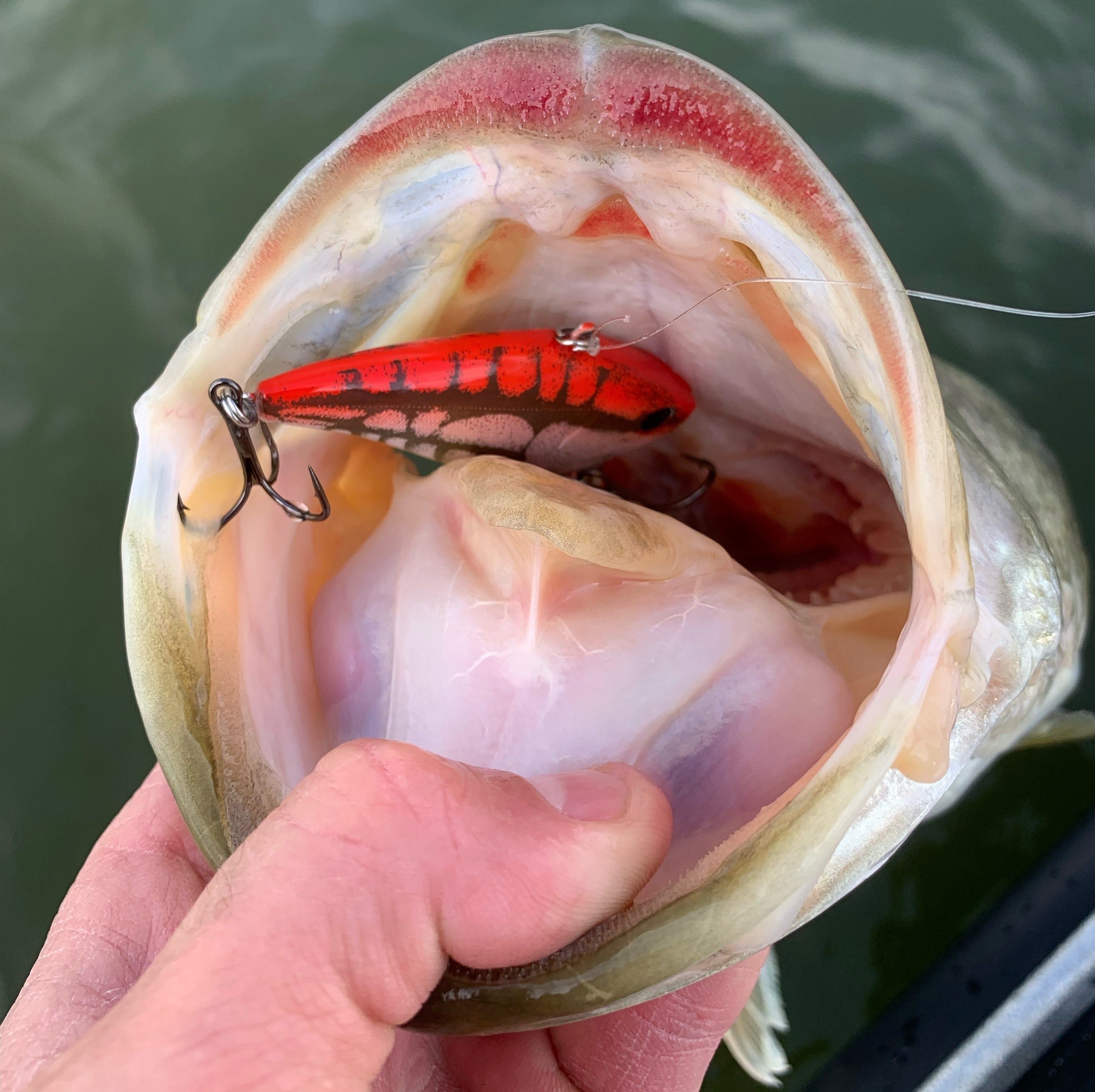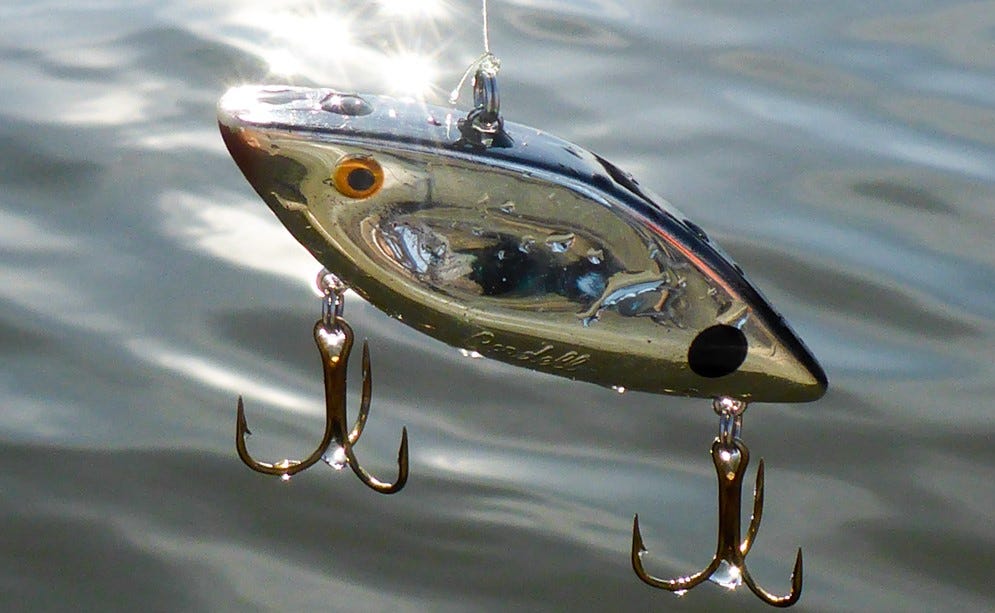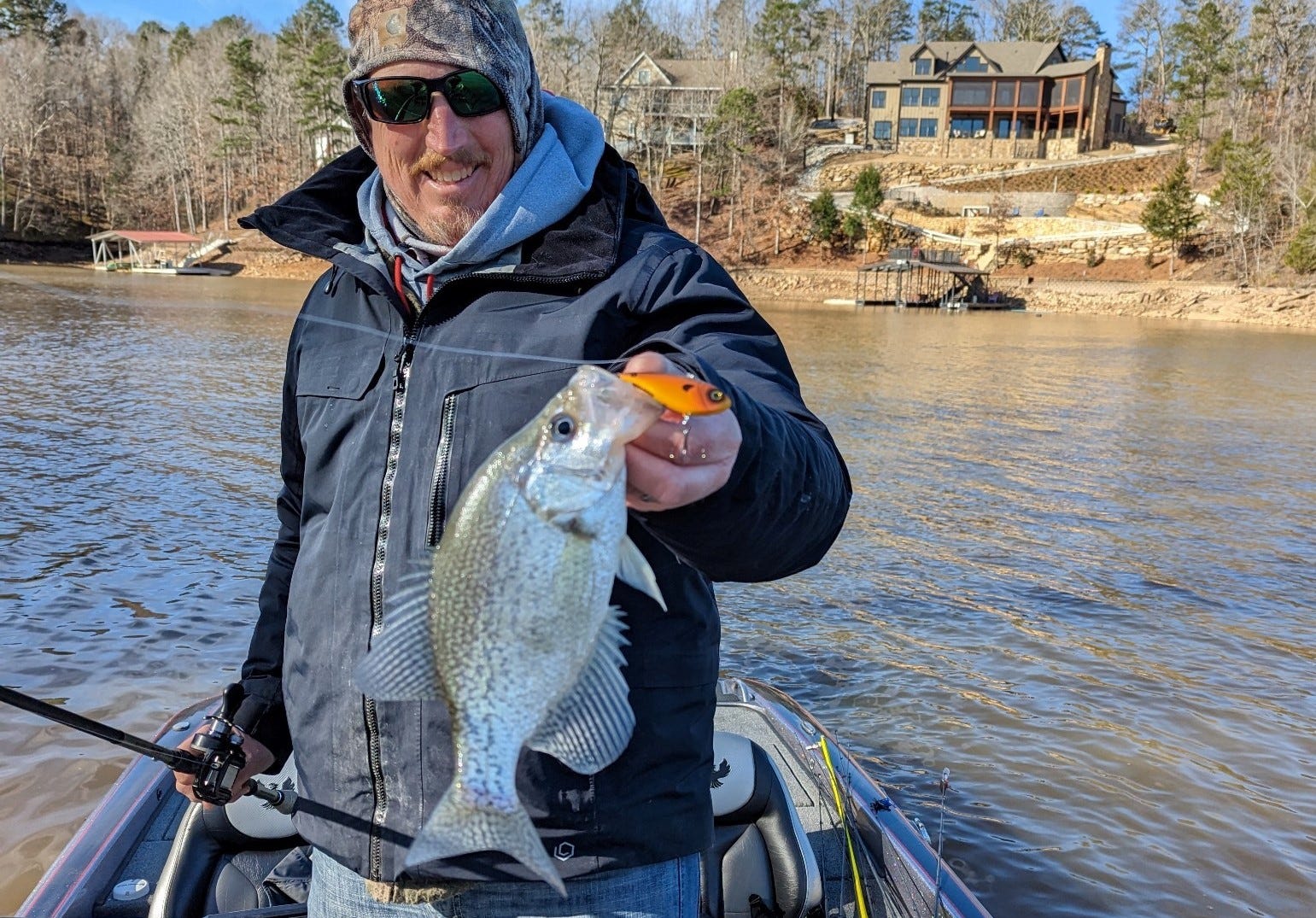- Jan 25, 2023
Use Lipless Crankbaits to Catch Early-Season Bass
Discover why lipless crankbaits, also commonly called rattle baits, excel during later winter and early spring, and learn how to best use these versatile and highly effective bass fishing lures.
Lipless crankbaits for bass fishing always get attention this time of year. These lures excel late in the winter and through the first half of spring. They produce enough tournament wins and big bass to regularly get highlighted on social media feeds and be featured in seasonal articles, podcasts, videos and more. If you pay any attention to the world of bass fishing, you can’t help but hear about lipless crankbaits, which also commonly dubbed rattle baits.
This year’s lipless crankbait buzz has been extra loud and started early because of a special launch by the Lurenet Paint Shop. The Paint Shop, which has built a big reputation with its crazily good custom colors, has kicked it up a notch with the release of SIX custom colors of the BOOYAH Hard Knocker and One Knocker. Like all Paint Shop releases, these are limited runs, with 300 of each size and color made.
Let’s take a closer look at lipless crankbaits like the One Knocker and Hard Knocker and the vital role they play in bass fishing strategies early in the year. We’ll consider why these baits work so well for early season bass fishing and then dig into the best locations and strategies for using lipless crankbaits to catch more bass.
New Paint Shop Colors
Before diving into season and strategies, let’s take a closer look at the Paint Shop release. Like past releases, these are available only from Lurenet.com, and with limited availability. In one sense, a decent total number of lures are available (so far). The Hard Knocker and One Knocker are both available in 1/4- and 1/2-ounce sizes in all six colors. That said, only 300 are available for any given color, size and model. Therefore, as an example, once Lurenet has sold 300 1/2-ounce Hard Knockers in Party Craw, that one isn’t just out of stock. It’s gone.
You really need to look and see the tones, details and finishes for yourself, but the colors are G Finish Red Craw, G Finish Brown Craw, Party Craw, Goldie, Graffiti Craw and Bulletproof Gill. G Finish colors, never previously available on a Hard Knocker or One Knocker, have a distinctive shimmery coating. All six color patterns feature “cold-water colors” including red, brown, gold, orange and purple.
Cold-Water Appeal


A lipless crankbait provides an excellent early season bass fishing option for several reasons, beginning with the shape and swimming action. Flat sides, a narrow body and a tight swimming action all suggest winter-slowed forage and appeal to fish that need to start feeding more but are themselves still sufficiently slowed by the cool water that they prefer easy meals.
Sound is also an important element early in the year. Late winter and early spring storms commonly deliver higher water and stain, both of which cause bass to rely more on hearing and on sensing vibrations through their lateral lines. Although a Rattle Bait’s movement is tight, it is also rapid, and the flat sides emit strong vibration. Add the sound of rattles or a thumping single ball, and you get strong sensory triggers to get a bass’ attention and prompt strikes.
The sound and vibration have added importance on any lake that has significant submerged vegetation. Bass make heavy use of any developing grass on flats early in the year, and the sound and vibration help them sense the bait approaching from their hiding places and often prompt ambush strikes as the bait moves past.
Another important virtue of a rattle bait for early season bass fishing is its versatility. Unlike other crankbaits, which are buoyant and get pulled down to a running depth via a diving lip, lipless crankbaits sink on their own. You control the running depth by the length of the pauses (if any) before beginning the retrieve or during retrieves, the speed you turn the reel handle, the angle of the rod and whether you are lifting the bait with the rod or simply cranking to move the lure forward.
What all that means is that you can fish a lipless crankbait shallow by keeping the bait moving and the rod held high, drop it deep with accentuated pauses, or anything in between. That’s vital during a season when fish move up and down with conditions and when some bass could be atop sun-warmed flats and others off the steep side of points on the same day. Having the capacity to effectively work a range of depth and to easily vary the way the bait moves through the water column speeds the patterning process and allows you to work many types of areas.
Because a rattle bait is easy to cast long distances and often produces well when fished at a pretty good clip, it’s also an exceptional lure for covering water and locating the most active fish.
Uncle Frank’s Expertise on Locations & Presentations
Regarding the best locations for fishing lipless crankbait and the best presentations for each, we’re going to leave that to Frank Scalish because he covers that (and more!) exceptionally well in the video below, even showing maps and explaining how to attack key areas. Don’t scroll past. Uncle Frank knows, and he doesn’t hold back on the good stuff!
Lipless Crankbait Sizes & Styles


A 1/2-ounce lipless crankbait is go-to for bass fishing. It’s by far the most popular size of Hard Knocker and One Knocker. The 2 1/2-inch body is ideal for matching prevalent bass forage, and half an ounce is heavy enough for long casts and to effectively work the right range of depths.
That said, the One Knocker is available in a larger 3/4-ounce size and a smaller 1/4-ounce size, and the Paint Shop colors of both the One Knocker and the Hard Knocker are available in 1/4- and 1/2-ounce sizes.
The 3/4-ounce One Knocker allows you to get deeper without having to slow retrieves as much and matches large forage. It also is some angers’ first choice for big bass waters like Guntersville and Toledo Bend. Conversely, the 1/4-ounce models make it easier to keep the bait shallow, match small forage and at times prompt more strikes from fish that are a bit fussy, possibly because of cold front conditions or heavy fishing pressure.
The BOOYAH One Knocker and Hard Knocker offer the same profile and swimming action, and they look the same, other than the distinguishing tail spot on every One Knocker. The difference is in the sound. The Hard Knocker has multiple small BBs in its body and makes a loud, high-pitched rattling sound. The One Knocker has a single tungsten ball and sounds off with a rhythmic, deep-pitched thud.
The Hard Knocker is more aggressive and can call fish from farther away, but the One Knocker, with it’s unique sound, will draw strikes when many anglers are fishing with rattle baits of various sorts and the fish have become shy about rattles. Sometimes it’s a day-to-day thing or the best sound varies according to the presentation, so it’s worthwhile to experiment with both styles and pay attention to how the fish respond.
Don’t Forget the Super Spot


Our focus in this blog has been in the high popular BOOYAH Hard Knocker and One Knocker, in part due to the opportunities created by the paint shop release of these lures. However, the Cotton Cordell Super Spot remains an outstanding early season bass lure, with many of the same virtues and it’s own niche in the mind of many veteran bass anglers.
The Super Spot was the original lipless crankbaits. Earliest versions were a happy accident, but that’s another story for another time.
What sets apart the Super Spot is that it “fishes lighter” than most other lipless crankbaits. This bait has a bit more buoyancy to counter internal weighing from rattles so a 1/2-ounce Supe Spot sinks slower than Hard Knocker (or most other lipless crankbaits) of the same size. That makes it the go-to for fishing atop extra shallow grass flats or over the tops of grabby stumps. No matter what lipless crankbait they most often throw, many bass pros keep a little stash of Super Spots handy for this type of situation.





